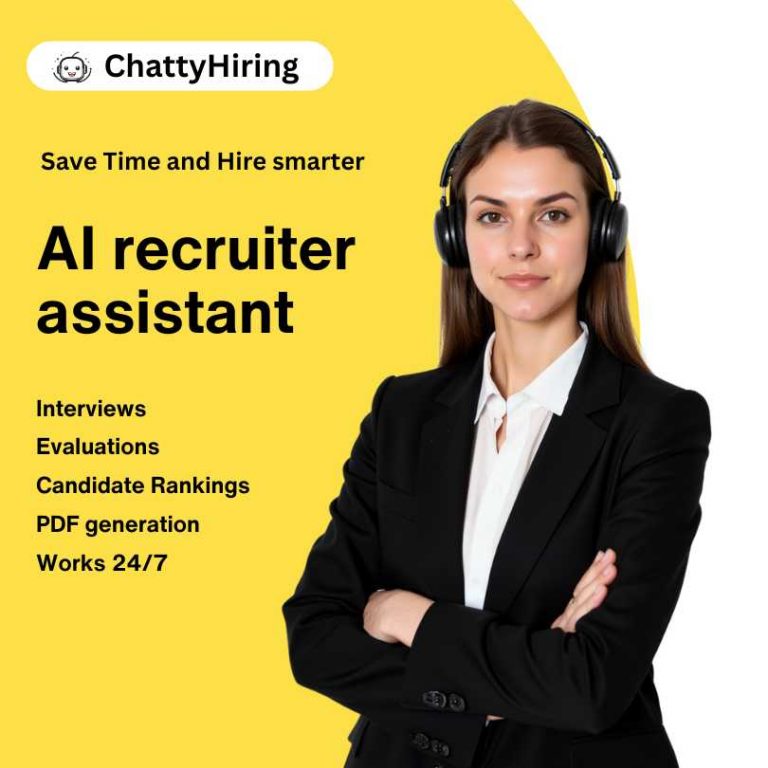In today’s rapidly evolving job market, where the demand for skilled professionals is high and competition is fierce, the interview process is undergoing a significant transformation. One notable change is integrating AI technology in candidate assessments, particularly in Behavioral STAR interviews. AI has revolutionized how interviews are conducted by offering advanced analysis capabilities beyond human judgment alone.
AI can accurately analyze candidates’ responses in STAR interviews, extracting valuable insights and identifying patterns that human interviewers might overlook. By delving into factors such as language use, tone, and sentiment, AI provides a more comprehensive assessment of candidates’ suitability for the role.
Employers increasingly rely on AI-assisted assessments to streamline their hiring processes and effectively identify top talent. By leveraging AI technology in STAR interviews; employers can gain deeper insights into candidates’ competencies and potential fit within their organizations. So, what exactly are STAR interviews, and how can candidates prepare to shine amidst AI’s rise in candidate assessments?
Let’s delve in and find out more!
Understanding behavioral STAR interviews
As candidates navigate the job market, understanding the role of AI in interviews, particularly in the context of STAR interviews, is crucial. By familiarizing themselves with AI-assisted assessments and adapting their preparation strategies accordingly, candidates can position themselves for success in the AI interview era. With AI’s ability to provide a more holistic assessment of candidates’ capabilities, those who embrace this technology-driven approach can stand out and excel in their job search endeavors.
The STAR acronym stands for Situation, Task, Action, and Result. This structured approach prompts candidates to recount specific examples from their professional or personal history, highlighting their problem-solving skills, decision-making abilities, and overall effectiveness in various situations. By digging into concrete examples, STAR interviews provide employers with valuable insights into candidates’ capabilities and potential fit within their organizations. Here’s how it works:
- Situation: Interviewers ask candidates to describe a past situation to gain insight into their background. This could be a project deadline, conflict, or customer service dilemma. The situation sets the foundation for evaluating the candidate’s actions and outcomes.
- Task: Candidates describe a challenge they faced during an interview. This helps the interviewer understand the context and complexity of the scenario. By outlining the task, candidates demonstrate their ability to analyze situations critically and identify objectives. The task could involve achieving targets, resolving technical issues, or managing priorities. It provides context for assessing the candidate’s skills.
- Action: When asked about a past task or challenge during an interview, candidates should describe their problem-solving skills, decision-making process, and level of initiative. Details about their actions, such as working with team members, taking decisive action under pressure, or using creativity to find innovative solutions, can demonstrate their ability to achieve results.
- Result: Finally, candidates discuss the outcomes of their actions. This allows interviewers to evaluate the candidate’s effectiveness and impact. Did they achieve the desired outcome? Did they exceed expectations? Did their actions have a positive impact on the organization or team? Candidates provide tangible evidence of their capabilities and contributions by quantifying results and highlighting achievements.

Preparing for Behavioral STAR Interviews
Now that we understand the STAR framework, let’s explore how candidates can prepare to excel in these interviews:
- Reflect on past experiences:
Taking the time to reflect on past experiences is crucial for preparing for STAR interviews. Candidates should delve into both their professional and personal backgrounds, identifying situations where they demonstrated key skills and competencies relevant to the job they’re applying for. Whether it’s leadership, communication, problem-solving, or teamwork, reflecting on past experiences helps candidates identify compelling examples to showcase their abilities during the interview.
- Select relevant examples:
Once candidates have identified relevant experiences, the next step is to choose examples that closely align with the competencies the employer is seeking. This involves selecting situations where they achieve notable results or overcome significant challenges. By carefully selecting examples that resonate with the job requirements, candidates can effectively demonstrate their suitability for the role and make a strong impression on interviewers.
- Craft compelling stories:
Structure is key when crafting responses for STAR interviews. Candidates should use the STAR framework to structure their responses, ensuring clarity and coherence in their storytelling. Each response should be concise yet descriptive, focusing on the key elements of the situation, task, action, and result. By presenting their experiences in a compelling narrative format, candidates can effectively engage interviewers and showcase their skills and capabilities.
- Quantify achievements:
Quantifying achievements adds credibility and impact to candidates’ responses. By quantifying the results of their actions, candidates can demonstrate the tangible impact they’ve had in previous roles and highlight their potential value to the prospective employer.
- Practice, practice, practice:
Finally, practice is essential for mastering STAR interviews. Candidates should practice their responses with a friend, family member, or mentor, paying attention to their delivery, tone, and body language.
Practicing allows candidates to refine their storytelling skills, ensure clarity and coherence in their responses, and build confidence for the actual interview. Practicing with feedback from others can help candidates identify areas for improvement and fine-tune their responses accordingly.
The role of AI in candidate assessments
As AI technology advances, it plays an ever-increasing role in assessing candidates. Many companies are leveraging AI-powered platforms to streamline the interview process and efficiently identify top talent.
AI can analyze candidates’ responses in STAR interviews, extracting valuable insights and identifying patterns that human interviewers might overlook. AI can provide a more holistic assessment of candidates’ suitability for the role by analyzing factors such as language use, tone, and sentiment.

Future of STAR methodology with AI interviews
Behavioral STAR interviews offer a structured approach to assessing candidates’ competencies and suitability for a role, and they are becoming increasingly prominent in the hiring process. At Chatty Hiring, we recognize the importance of leveraging innovative techniques like the STAR framework to identify top talent for our clients. Our platform is designed to streamline the recruitment process, incorporating AI-assisted candidate assessments to ensure thorough and efficient evaluations.
Understanding the STAR framework and using Chatty Hiring’s advanced technology can increase candidates’ chances of success and assist employers in making data-driven hiring decisions. Remember, preparation is key. So, take the time to reflect on your experiences, craft compelling stories, and practice your STAR responses. With the right preparation and mindset facilitated by platforms like Chatty Hiring, you can ace your next Behavioral STAR interview and take your career to new heights.
-

A passionate advocate for the future of HR innovation. With expertise in leveraging AI to revolutionize recruitment processes, Carlos has a clear vision: empower HR teams while creating meaningful candidate experiences.
View all posts





